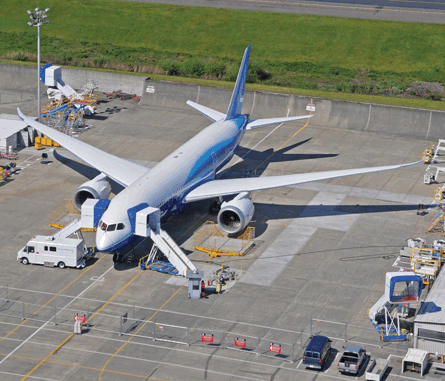While the type's flight-test programme is under way, Boeing will begin 787 production to begin filling the huge 866-aircraft, 56-customer backlog already accumulated. But the airframer may get some help from the ailing global economy, which has seen several early customers look for deferrals of 2010 scheduled deliveries.
Boeing has already seen deferrals from early customers Delta Air Lines and five Chinese carriers, and now Qantas is in negotiations with Boeing to delay the delivery of the 65 787s it has on order. Its low-cost Jetstar subsidiary is expected to take delivery of its first 787-8 in May 2010.
Qantas chief executive Alan Joyce told Flight International's sister publication Airline Business at the International Air Transport Association annual general meeting in Kuala Lumpur that the troubled economic environment, including the impact of swine flu on Asian travel, is a key motivator for negotiating the deferral: "We don't feel next year is the right time."
 |
|---|
© Boeing |
Bank of America/Merrill Lynch aerospace analyst Ron Epstein says the change in early demand for the 787 provides Boeing a chance to approach its ambitious production ramp-up planning more modestly: "If the market is giving you a reasonable way to ramp up, then why not take it?"
Boeing plans to build 787s at a rate of 10 a month by the close of 2012. First-tier 787 supplier Spirit AeroSystems, which is responsible for the forward fuselage, pylons and leading and trailing edges of the wings, says it plans to deliver two shipsets a month to Boeing for the remainder of 2009 and into 2010 as the company waits for guidance on the coming ramp-up.
Epstein adds that a slower ramp-up allows for the 787 supply chain to build its capability at a more "controlled pace" while giving the company additional time to work in weight reduction and performance enhancements.
"Time is [Boeing's] friend," says Epstein. "They didn't plan it this way, but launching an airplane into a down cycle gives them more flexibility."
Source: Flight International























